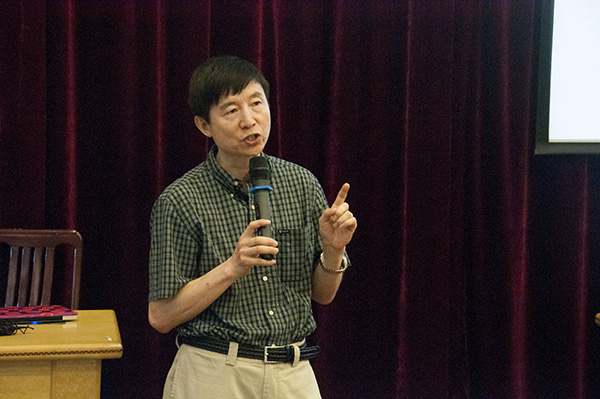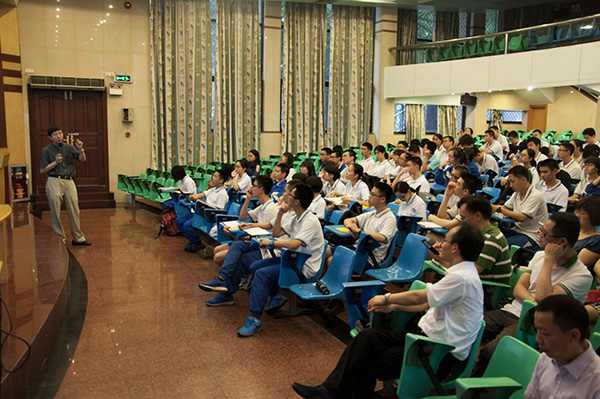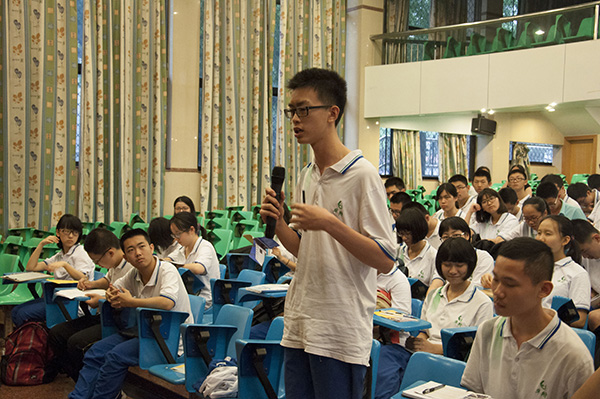On May 16, leading the University of Michigan- Shanghai Jiao Tong University Joint Institute (UM-SJTU JI) Master Lecture Delegation on a visit to Huadong Normal University Affiliated High School in Guangdong Province, Honorary Dean Jun Ni gave a speech entitled “How ‘Made in China’ leads the world,” exploring how China should adapt to the new manufacturing trend and cultivate innovative engineering talents in preparation for “Made in China 2025.”

In his talk, Jun Ni reflected on the current state and challenges of China’s manufacturing as an important measure of China’s overall strength. He emphasized the need of a low-carbon transformation of traditional manufacturing industries to high-value-added manufacturing chains in the global economy. Using SWOT analysis, Ni compared the Chinese and American manufacturing from aspects of market size, resources, innovative ideas, policy support, professional expertise and talent pool. In layman’s language, he pointed out the shortcomings and opportunities in China’s manufacturing, for which it is critical to cultivate competitive manufacturing talent s with global vision in China’s engineering education.

With the current boom of “everybody creates a business; everybody innovates,” China still lags behind the advanced U.S. in training innovative talents. The key cause lies in China’s higher education which lacks quality teaching staff, management system reform and innovation culture. For this problem, Ni used JI as an example to analyze the Sino-U.S. differences in higher education and explore the solution by taking advantages of both systems’ strong suites to create an engineering education that trains highly qualified talents to meet industrial demand.

At the Q&A session, there was an enthusiastic exchange between Ni and the students of this top Guangdong high school. Ni was impressed by the students’ insight into China’ development strategy, “your questions are deep and broad, reflecting your patriotism.” He emphasizes the need of brain power in China’s manufacturing industry and encouraged the students to realize their potentials and become the backbone of “Made in China 2025.”





